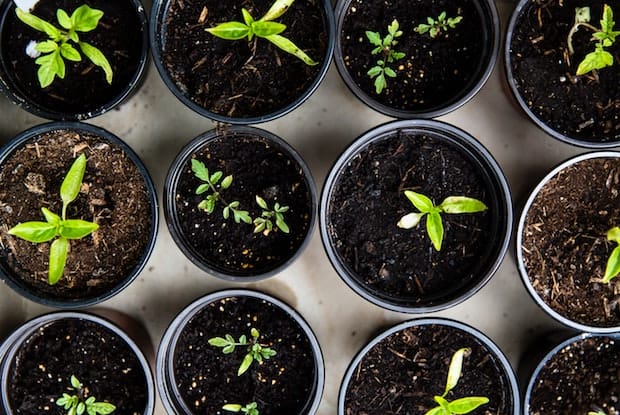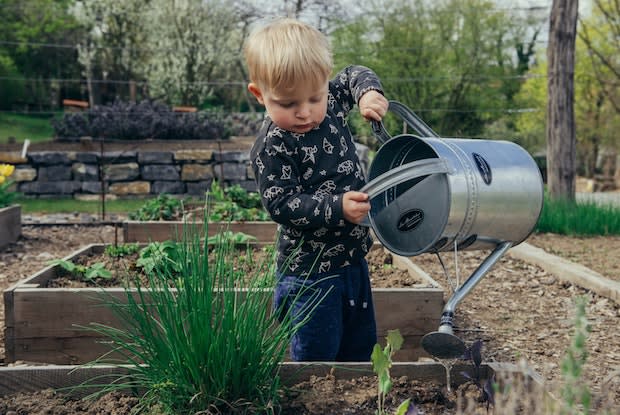Tabel of Contents
I. What triggers asthma outdoors?
II. Gardening with asthma: reducing allergens in the yard
Part of managing asthma is learning what triggers your symptoms and how to avoid these things. Medications like Advair can help manage your conditions, but what if allergic asthma is affecting your ability to enjoy your own yard? It might seem like all of Mother Nature is against you, but there are lots of ways you can optimize your garden to reduce allergy and asthma triggers.
What triggers asthma outdoors?
Pollen – Pollen is a grainy substance that’s essential to many plants’ life cycles, spreading the male DNA required to fertilize and produce new seeds. Pollen is usually spread between plants by wind or with the help of birds and insects. Wind-borne pollen often ends up in the nasal passages of people, triggering allergic reactions, and asthma.
Mold – Similar to pollen, mold releases spores that can become airborne and cause irritation in airways. Although mold may not be a deliberate inclusion in your yard or garden, these fungal organisms have the ability to grow just about anywhere relatively warm and damp. [1]

Gardening with Asthma: Reducing allergens in the yard
1. Find female plants. Some species of plants are dioecious, meaning each individual is either male or female. Only the male plants in these species release pollen, making females a better choice for reducing allergies and asthma.
2. Avoid catkins. These drooping clusters of flowers (commonly seen on birch, willow, and oak trees) are especially notorious for spreading pollen through the air.
3. Choose plants that are pollinated by insects. Plants that depend on insects to spread their pollen generally produce larger, stickier grains of pollen that aren’t easily carried by the wind.
4. Big, bright flowers usually indicate a plant is insect-pollinated. Some of the most popular low-allergy flowers include:
- Begonia
- Azalea
- Cactus
- Geranium
- Iris
- Petunia
- Impatiens
5. If you’re looking for low-pollen trees, try:
- Juniper (female)
- Star apple
- Firs
- Cedars
6. Grass pollen is one of the biggest asthma triggers. Keep grass cut short to help reduce the amount of pollen released, or consider planting low-pollen grass-like:
- Hybrid grasses that have been selectively developed to reduce pollen
- Buffalo grass (hardy, low water requirements)
- Augustine grass (good for warm temperatures but not drought resistant)

7. Adopt mold prevention strategies. Once mold has established itself in your yard it can be difficult to get rid of. These strategies can help to inhibit current mold populations and stop new ones from thriving:
- Give your lawn plenty of sun by pruning back shade trees, or replace grass with shade-loving plants.
- Water early in the day to give the soil a chance to dry by night.
- Rake damp lawns to help them dry out (have someone non-allergic do this).
- Aerate lawns that are predisposed to mold.
8. Other tips for people with asthma who enjoy time outdoors:
- Keep a dedicated set of gardening clothes to prevent bringing irritants into your home.
- Shower or wash your hands thoroughly after working in the garden.
- Avoid spending time in your yard on particularly windy days or immediately before or after a thunderstorm.
- Check your local weather service for information on pollen counts. Stay indoors and keep windows shut when counts are high.
- Make sure you have a ready supply of asthma inhalers and dispose of any expired medication. [2]
Freeing your yard of asthma triggers is a good decision, but it won’t completely eliminate the chances of a flare-up while you’re enjoying the outdoors. Keeping good control of allergies and asthma with the medications prescribed by your doctor is the best way to ensure you don’t experience sneezes and wheezes every time you leave the house.
At TrueCanadaPharmacy.com, asthma medication like Advair is available at reduced costs that will leave you with extra cash to spend at the greenhouse. Click here to search for your drugs and place an order today.
DISCLAIMER: The content in this article is intended for informational purposes only. This website does not provide medical advice. In all circumstances, you should always seek the advice of your physician and/or other qualified health professionals(s) for drug, medical condition, or treatment advice. The content provided on this website is not a substitute for professional medical advice, diagnosis or treatment.
